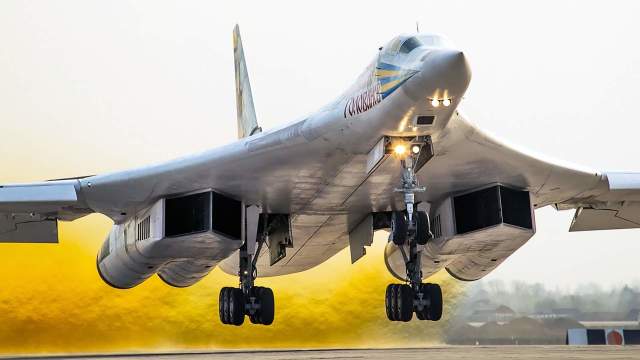A whole line of ammunition has been developed for strategic bombers
Russian aviation will receive an updated "long arm" — it receives a modernized line of cruise missiles, and work is also underway on fundamentally new products. Sources in the Ministry of Defense of the Russian Federation told Izvestia about this. What systems are we talking about and how they will increase the combat capabilities of the Russian strategic forces — in our material.
History of creation
During a demonstration of aviation equipment to Russian Defense Minister Sergei Shoigu and North Korean leader Kim Jong-un at the Knevichi Airbase near Vladivostok on September 16, the commander of Long-range Aviation, Lieutenant General Sergei Kobylash, said that the Tu-160 supersonic strategic bombers had received new X-BD cruise missiles with a range of over 6.5 thousand km.
Since its appearance in the 1940s and 1950s, cruise missiles, or, as they were still called, "projectile planes", have been progressively developing on the principle of "further, higher, faster". The flight speeds, range, and altitude in the atmosphere grew and reached its technical maximum.
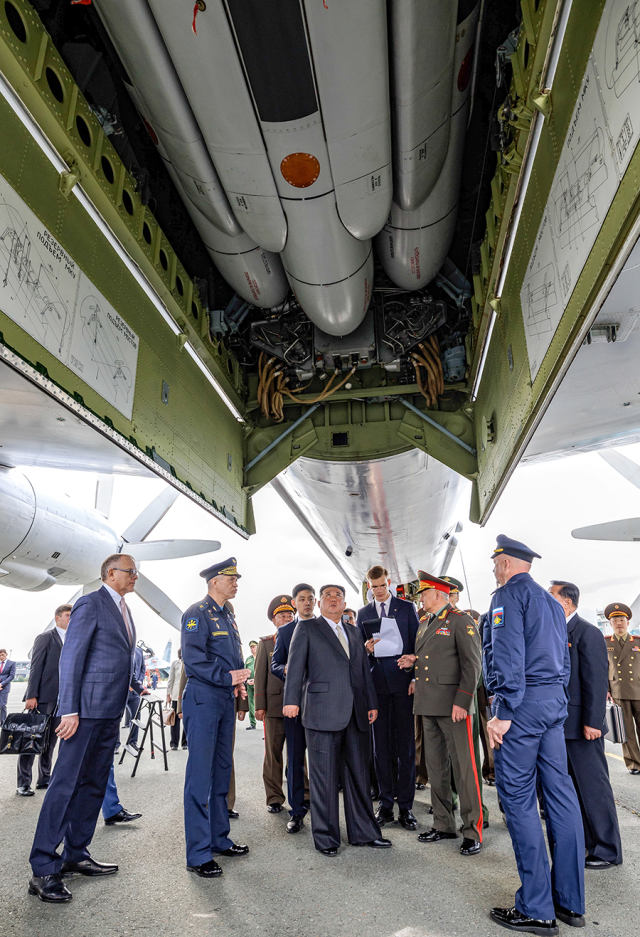
Commander of the Long-range Aviation of the Russian Aerospace Forces Sergey Kobylash, Chairman of State Affairs of the DPRK Kim Jong-un and Russian Defense Minister Sergei Shoigu at Knevichi International Airport (Vladivostok)
Image Source: Photo: TASS/Vadim Savitsky
But air defense systems were also developing, and there was an almost stalemate when new supersonic and high-altitude cruise missiles could prove to be a relatively easy target for air defense. And then, at the end of the 1960s, in one of the leading research aviation centers of the USSR, GosNIIAS conducted a research development of Echo to determine the shape of the missiles of the future.
It was found that the use of relatively inexpensive and simple subsonic long-range cruise missiles in a nuclear conflict may be more effective than a strike with high-speed stratospheric munitions. The air defense system of a potential enemy could be overcome due to a large number of products in the raid, as well as through the use of "touchy" technology — cruise missiles could initiate their nuclear charges when hit by air defense means and thus "blinded" and hit their electronics, clearing the way for other missiles of the attacking wave. Stealth could also be achieved due to the size, design and flight at the lowest possible altitude with the circumference of the terrain.
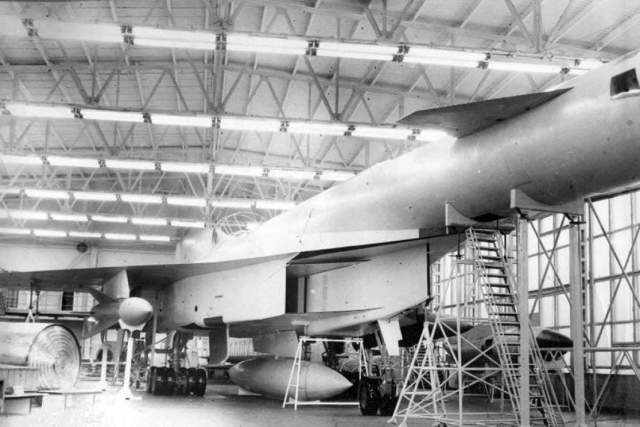
The layout of the first version of the X-45 rocket under the wing of the layout of the Sukhoi Design Bureau T-4 aircraft. 1966
Image Source: Photo: forums.airbase.ru
In 1971, the Raduga design bureau came up with a proposal to create such a missile for arming strategic aviation. But the USSR Ministry of Defense rejected the initiative because of its low characteristics - it was not supersonic and somehow unusual. Just at this time, the creation of a powerful and almost hypersonic X-45 rocket was being completed (weight 4.5 tons, range up to 1.5 thousand km, flight speed at least 3.2 M), against which small-sized and subsonic missiles looked clearly losing.
But in the mid-1970s, it became known that several programs had been deployed overseas to create just small-sized cruise missiles of sea, land and air-based. It is possible, by the way, that they took the results of Echo research seriously there — it is quite likely that the CIA could have read them. And the USSR began to catch up with the United States in the next round of the arms race. In 1976, work began on the sea and land complexes — they were conducted by the Sverdlovsk Design Bureau "Novator" with the project of the KS-122 rocket "Garnet".
The answer to America
At the same time, work began at the Raduga ICD on our response to the American ALCM air cruise missiles — the X-55 strategic air-to-ground missile.
The guidance system is based on the research of Professor Alexander Krasovsky from the Zhukovsky Academy on extreme navigation. The route of the rocket was built between the correction sections, where it independently determined its coordinates and made adjustments to the direction of flight. In 1981, it went on trial together with the first carrier aircraft, which was the Tu-95M-55 four-engine heavy missile carrier (in the series — Tu-95MS).
X-55 cruise missile on a transport trolley at the Tu-95MS aircraft
Image Source: Photo: RussianPlanes.net/Волков
On December 31, 1983, the aviation missile system with the strategic nuclear cruise missile X-55 was adopted by the long-range aviation of the USSR. The Tu-95MS could carry six missiles on a revolver-type launcher inside the fuselage and up to 10 missiles on pylons under the wing. The range of such a complex was intercontinental and allowed strikes on the territory of the United States with the return of carrier aircraft to their airfields.
Technology improvement
In the second half of the 1980s, long-range aviation received the Tu-160 supersonic carrier aircraft and the upgraded X-55CM missile, the flight range of which was increased due to the use of conformal additional fuel tanks on it. Later, in the early 2000s, the non-nuclear cruise missile X-555 was adopted, which became the embodiment of all changes in the development of electronics and was equipped with an improved guidance system.
On November 17, 2015, during the counter-terrorism operation in Syria, the X-101 and X-555 long-range air-launched cruise missiles were used for the first time against targets. The carriers were the Tu-160 and Tu-95MS. A total of 34 ammunition was used from five aircraft.
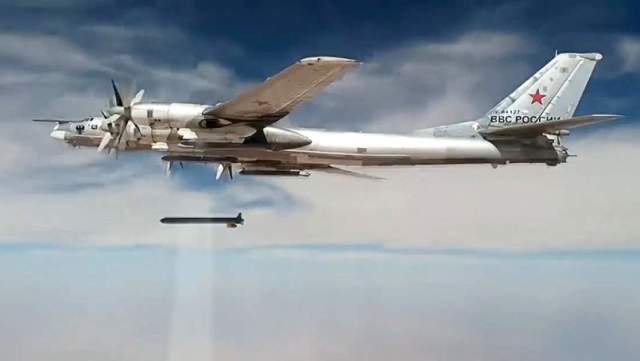
The Tu-95MS strategic bomber-missile carrier strikes with X-101 cruise missiles at terrorist targets in Syria
Image source: Photo: RIA Novosti/Ministry of Defense of the Russian Federation
The X-101 became the first Russian "stealth" missile - its design was originally made taking into account the reduction of radar visibility for enemy air defense radars. Testing began in 1998, and serial production was launched during the 2000s. The new missile could be carried by both Tu-160 and upgraded Tu-95MSM aircraft. And, of course, it was included in the armament complex of the newly produced modernized Tu-160M.
Traditionally, the rocket is equipped with a retractable turbojet engine and a folding wing after launch. The X-101 has a non—nuclear warhead, but there is a nuclear analogue - the X-102. The range of the X-101, according to various estimates, is from 3 thousand to 5 thousand kilometers. The flight speed is transonic.
New features
In the 2010s, it became clear that even successful missile projects of the 1990s should be replaced with more advanced products. In 2017, the scientific director of GOSNIIAS, Academician Yevgeny Fedosov, said that a promising cruise missile was incorporated into the project of the upgraded Tu-160M aircraft, the flight range of which would significantly exceed this characteristic of the X-101. So for the first time in the open press, the future X-DB rocket was mentioned, where DB means "long range". According to Fedosov, "the concept has been outlined today: not to introduce long-range aircraft into the enemy's air defense zone."
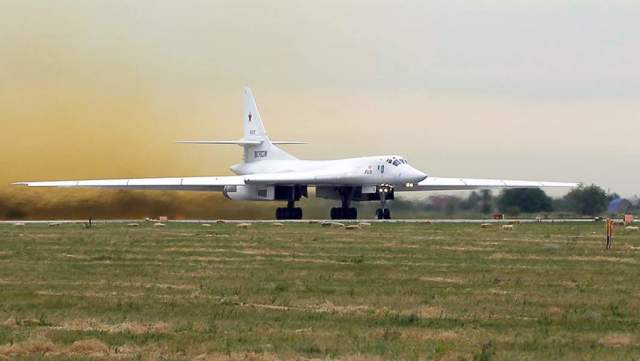
Strategic missile carrier Tu-160M before the scheduled flight over the neutral waters of the Baltic Sea
Image Source: Photo: TASS/Ministry of Defense of the Russian Federation
— He has to work outside this zone, and the weapon enters the zone. If such an aircraft carries a lot of weapons, then the principle of information degradation in the enemy's air defense begins to work again. Without entering the air defense zone, but by launching a missile there, we dictate the direction of the strike, the moment and the density. And if we scout the enemy's air defenses well, then we will always find a bottleneck and throw a group into this throat. If we are talking about a strategic nuclear strike, then at least one missile will always pass. And that will be enough," Fedosov said.
And in 2023, the Russian Ministry of Defense officially announced that Tu-160 aircraft can carry X-BD missiles with a range of at least 6.5 thousand km. Today there is no such country in the world. Moreover, they probably have both a thermonuclear and a conventional "conventional" version of combat units. And, quite possibly, in the coming months, the debut of new missiles in a special military operation may take place.
Dmitry Kornev
